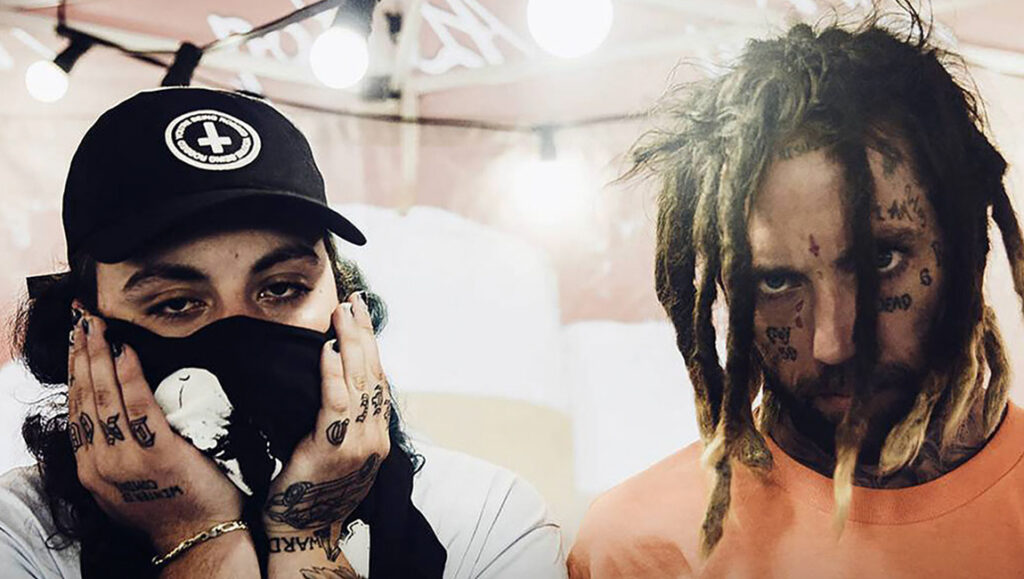The Suicideboys’ mythos — and the group’s amassed discography of 42 EPs/mixtapes all since 2013 — is daunting, to say the least. The duo of New Orleans cousins Ruby da Cherry and Scrim (formerly “$lick $loth”) have been teasing their first commercial release for more than a year, so casual fans (like this writer) have been stewing and wondering things like: What exactly will the focus of their music be? How will their style have refined itself? And what producers will they work with? The end result, I Want to Die in New Orleans, proves modestly worth the wait and all the anxious anticipation. For the first-time listener, album opener “King Tulip” gives a 101 course on how the boys craft a tune: first comes a heavily compressed, Vaporwave-inspired instrumental; then a trappy high-hat and booming bass; and finally, Ruby charges in with a swaggering melody, changing up his flow with triplet wordplay and pitch-shifting shouts. Once Ruby finishes, a stretch of unembellished instrumental stands-in lieu for the hook — until Scrim jumps in, taking a more subtle approach, leaning into the emotional expression and tone of his voice to tell a story that ends with: “4am, praying, ‘can I get some rest?’ / Dreams of suicide and a need for death.”
Suicideboys’ style — which has been accused of relying too heavily on inspiration from Three-6 Mafia’s earlier horrorcore phase (and 1995’s Mystic Stylez does haunts this LP) — can come across as unrelenting. Scrim’s intro on “122 Days” (“Ask me if I’m happy / Stupid motherfuckin’ question”) neatly summarizes the typical lyricism of this group, which covers hyperbolic descriptions of drug use, brags about murdering enemies, and even suicidal threats, all of which eventually become repetitive and unintentionally mundane. But the care the duo put into their stylistic digressions, and the overall stream-of-consciousness flow of this project, elevates I Want to Die in New Orleans. Moments like the scream-chanting at the end of “Bring Out Your Dead,” the suicidal sing-song hooks on “Nicotine Patches” and “Long Gone,” the punk rock interlude of “I No Longer Fear the Razor Guiding My Heel (IV),” and the near-death, leaned-out flow on “Fuck the Industry” all summon a particular kind of pathos, while the ambitious “Carollton” — named after a street in New Orleans — finds Scrim and Ruby’s vocal shifts embodying a coterie of different characters from their hometown. Combine all this with the morbidly-utilized local news samples woven throughout the album and the net result is a captivating, if disturbing, depiction of a specific environment, and the types of personalities bread by it.
Published as part of What Would Meek Do? | Issue 3


Comments are closed.